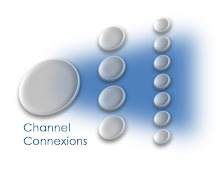I used to be an advocate of developing a channel structure that created a kind of franchise feel. My reasoning was that if you were a partner of mine, I wanted the end user to have a certain expectation about you. My analogy was McDonald's. No matter where you go across the globe, you can be reasonably sure that the fries will taste the same at any McDonald's franchise. There is a certain level of comfort in knowing that I will get the same quality of product and be able to eat in a similar environment in virtually any McDonald's restaurant.
This level of standardization is no longer valid when what the customer wants is a solution to their specific issue or problem. A generic product (no matter how good) becomes average when you, as the vendor, try to push that product to all customers. This works great in a fast food franchise, but not when your customer challenges vary literally by customer. The McDonald's fries example is one of a vendor driven solution being pushed on the market.
Today, we can change the model. Using collaboration tools, we can leverage our channels market expertise and customer knowledge to develop individual solutions for each of our mutual customers. The channel can help us define the customer need. They can provide the implementation and integration services to match that need and we can offer the product or suite of products to the solution. The fries will not always tasted the same, but that is precisely the point. Customers do not want a generic solution that is "good enough". They want a great solution to their specific problem.
Instead of bundling a bunch of generic widgets together and calling it Solution A, it is better to let the customer define the problem and work backwards from there. The benefit is that you will be offering more value and can price at a premium, the channel will be able to develop advanced services to drive their business and the customer problem is resolved.
Monday, November 10, 2008
Subscribe to:
Post Comments (Atom)




No comments:
Post a Comment